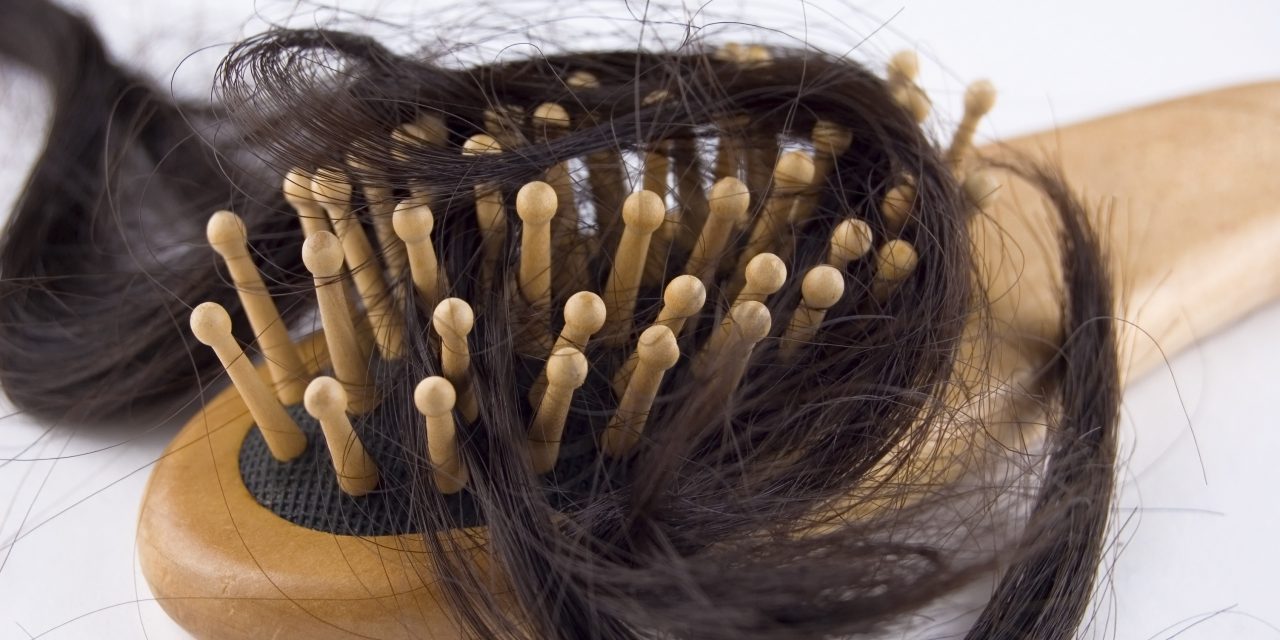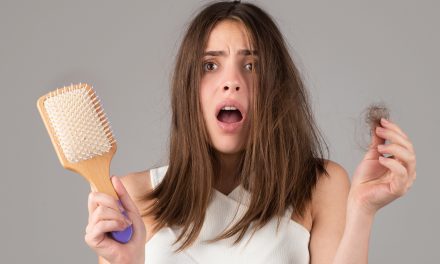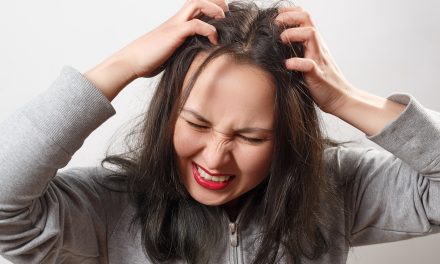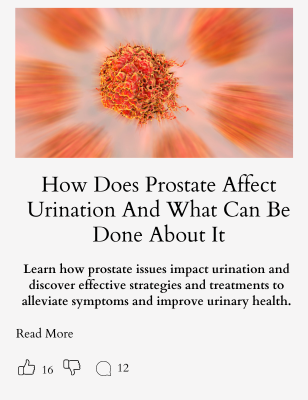Experiencing hair loss can be unsettling, especially if it seems to happen suddenly or without an obvious cause.
While hair shedding can be a normal part of life, many wonder if it might indicate a deeper issue.
Hair loss can indeed be a sign of serious medical conditions, such as thyroid problems, nutritional deficiencies, or autoimmune diseases.
In some cases, conditions like severe anemia can be linked to unexplained hair loss, impacting nearly one in five individuals from a study on hair health.
Certain infections, such as syphilis, may also cause hair shredding without showing skin symptoms.
Prompt consultation with a healthcare professional is key when faced with unexplained hair loss, as it could signify an underlying health concern.
Dermatologists can provide insights and suggest effective treatments for both the visible condition and any hidden causes.
Key Takeaways
- Hair loss may signal underlying health issues.
- Timely diagnosis helps address possible serious conditions.
- Medical advice is crucial for effective management.
Understanding Hair Loss
Hair loss affects many people worldwide, with various types and causes. From the natural process of aging to medical conditions, understanding the nature of hair loss helps in identifying potential concerns more accurately.
Types of Hair Loss
Hair loss can manifest in different forms, each with unique characteristics.
Androgenetic alopecia, also known as pattern baldness, is one of the most common types. It affects both men and women, leading to a predictable pattern of baldness.
Telogen effluvium is often temporary, causing hair to thin across the scalp. It can occur after stress, illness, or childbirth.
Anagen effluvium is typically linked to medical treatments like chemotherapy, where hair falls out during the growth phase.
Alopecia areata is an autoimmune condition where the body’s immune system mistakenly attacks hair follicles. This can lead to patchy hair loss. Understanding these types aids in identifying whether hair loss might indicate a more serious health issue.
Common Myths and Misconceptions
There are many myths about hair loss that can cause confusion. One common misconception is that frequent shampooing or wearing hats can lead to baldness, which isn’t true.
Hair loss is usually more complex and tied to genetic or health factors.
Myths also surround the causes of alopecia and other hair loss types. For instance, some people believe that poor circulation leads to hair loss, yet there is little scientific support for this claim. Understanding the real causes helps in managing expectations and finding proper treatments.
Identifying Serious Conditions
Hair loss can sometimes be more than just a cosmetic concern. It may signal underlying health issues.
Certain conditions, like autoimmune diseases or hormonal imbalances, can impact hair growth and lead to noticeable loss.
Alopecia Areata
Alopecia Areata is an autoimmune condition where the immune system mistakenly attacks hair follicles. This results in patchy hair loss on the scalp or other parts of the body. While the exact cause is not known, genetics may play a role. Treatments focused on suppressing the immune response can sometimes help regrow hair. Some people with this condition may also experience nail changes, such as pitting.
Lupus
Lupus is an autoimmune disease that can cause inflammation in various parts of the body, including the skin. Hair loss in lupus can be due to the disease itself or as a side effect of medication. A butterfly-shaped rash on the face is a common symptom, along with joint pain and fatigue. Managing lupus requires a comprehensive approach, often involving medication to control symptoms and prevent flare-ups.
Thyroid Disease
Thyroid disease, including both hyperthyroidism and hypothyroidism, can lead to hair loss. The thyroid gland produces hormones that regulate metabolism and energy, affecting hair growth cycles. An imbalance in these hormones can lead to thinning hair. Diagnosis is usually confirmed through blood tests measuring hormone levels. Treatment often involves medication to stabilize the thyroid hormone balance.
Autoimmune Conditions
Apart from alopecia areata and lupus, other autoimmune conditions, like celiac disease and rheumatoid arthritis, may contribute to hair loss. This happens because the immune system can attack hair follicles or disrupt hormones essential for hair growth. Diagnosing these conditions typically requires a combination of medical history, physical examination, and specialized tests. Managing these conditions can sometimes help reduce hair loss.
Signs and Symptoms of Hair Loss
Hair loss can manifest in various ways, often serving as a clue for other health issues. Key indicators include noticeable thinning, patches, or a receding hairline. Understanding these signs can help in diagnosing potential underlying conditions.
Physical Indicators
Thinning Hair: One of the first signs is often the gradual thinning, especially on the top of the head. This can be particularly noticeable when parting the hair. Both men and women may experience a receding hairline or a widening part.
Bald Patches: Sudden appearance of circular and patchy bald spots can be alarming. These patches may also feel itchy or painful before the hair falls out. In some cases, the hair growth around these patches is thinner or weaker.
Additional Signs: Physical indicators might include more hair left in the shower or on the brush, and less volume in ponytails for longer hair. It’s important to pay attention to these changes as they may signal hereditary hair loss or other conditions.
Possible Underlying Illness
Alopecia Areata: This autoimmune disorder causes the immune system to attack hair follicles, leading to bald patches. Patients with significant hair loss often experience changes in mood and confidence due to the visible signs.
Lupus or Infections: Hair loss accompanied by skin rash or lesions might indicate lupus or infectious diseases. This type of loss may show signs of scarring or inflamed areas on the scalp, which should be discussed with a healthcare provider.
Endocrine Disorders: Conditions such as thyroid dysfunction can cause diffuse thinning across the scalp. It’s crucial to monitor for other symptoms like fatigue or weight changes, as these can provide additional clues to potential underlying causes.
Causes and Risk Factors
Hair loss can have various causes and risk factors linked to both genetics and lifestyle. Understanding these can help individuals identify early signs and possibly prevent further hair loss.
Genetic Factors
Genetic predisposition plays a significant role in hair loss. One of the most common causes of hair loss is hereditary hair loss, often referred to as male or female pattern baldness. This condition is strongly connected to family history. If a parent experienced significant hair loss, their children are likely to face similar challenges. Typically, male pattern baldness starts with a receding hairline and bald spots, while female pattern baldness usually presents as thinning hair over the crown. The onset and pattern can vary, with some individuals experiencing changes as early as their teens.
Environmental and Lifestyle Influences
Environmental factors, combined with lifestyle choices, can also trigger hair loss.
Tight hairstyles, such as ponytails or braids, can lead to a condition known as traction alopecia, where hair is pulled from the scalp. Continuous strain might cause permanent hair loss if not addressed.
Hormonal changes, especially during pregnancy, menopause, or due to thyroid issues, can result in temporary or permanent hair loss. Stressful life events might contribute to hair shedding as well.
Moreover, poor nutrition and certain medications are known to impact hair health. Ensuring good hair care practices and a balanced diet rich in essential nutrients may help reduce the risk of hair loss related to these factors.
Hair Loss Treatments
There are various treatments available for those experiencing hair loss. Options include medications, surgical procedures, and alternative therapies, each with its own advantages and considerations. The choice of treatment depends on the individual’s specific needs and the underlying cause of the hair loss.
Medication Options
Medications for hair loss often focus on slowing hair loss and promoting regrowth.
Minoxidil, commonly known as Rogaine, is an over-the-counter topical solution that helps stimulate hair growth. It is suitable for both men and women and must be applied regularly to see benefits.
Finasteride, known as Propecia, is a prescription medication that men can take orally. It works by reducing the hormone levels responsible for hair loss. However, it’s important to note that finasteride is not typically recommended for women.
Corticosteroids are another option and are often administered as injections to reduce inflammation and encourage hair regrowth. They can be particularly useful for conditions where the immune system attacks hair follicles.
Surgical Solutions
For those looking for a more permanent fix, surgical solutions like hair transplant surgery can be considered.
This procedure involves moving hair follicles from a part of the body where hair is denser to the bald area.
There are two main types of hair transplants: Follicular Unit Transplantation (FUT) and Follicular Unit Extraction (FUE). FUT involves removing a strip of scalp, while FUE extracts individual hair follicles. Both methods aim to provide natural-looking hair and promote hair growth in bald areas.
Patients should discuss with a qualified surgeon to understand the process, costs, and whether their hair loss condition makes them a good candidate for surgery.
Alternative Therapies
Alternative treatments include options like laser therapy and dietary supplements.
Low-level laser therapy is thought to increase the blood flow in the scalp and stimulate hair follicles.
Some individuals have considered using herbal remedies and supplements rich in nutrients that support hair growth. Even though evidence on efficacy varies, some find these methods helpful.
Scalp micro-pigmentation is another alternative where small tattoos are used to create the appearance of hair. This option can be non-invasive and is mostly used to enhance the look of hair density. Consulting a professional can help determine the best approach based on individual needs and preferences.
Consulting a Dermatologist
Consulting a dermatologist is crucial for diagnosing the underlying causes of hair loss. Timely visits can help identify problems and guide effective treatments, which may involve medications or lifestyle changes.
When to See a Specialist
Hair loss can be distressing, impacting self-esteem and daily life. If you experience sudden, large patches of hair loss or notice scalp irritation, seeking advice from a dermatologist is important.
Early intervention often leads to better management of the problem. A specialist can identify whether hair loss indicates a more serious condition, like alopecia areata or an underlying medical issue.
If over-the-counter solutions do not show results after a few months, it might signal the need for professional evaluation and potential treatment adjustments.
What to Expect
During the first appointment, a dermatologist typically conducts a detailed examination of the scalp. They may ask questions about medical history and lifestyle to pinpoint possible hair loss causes.
Diagnostic tests, like blood work or a scalp biopsy, could be recommended for further investigation.
Depending on findings, the dermatologist might suggest medications or topical treatments. Various therapies aim to slow hair loss, promote regrowth, or address any skin conditions contributing to the problem.
A personalized treatment plan is often outlined, with the possibility of follow-up visits to monitor progress.
Managing Hair Loss
Managing hair loss involves proper hair care and finding support. It is important to adopt daily routines and seek help to lessen the impacts of hair loss. These strategies can help individuals feel more comfortable and confident.
Everyday Hair Care
Proper hair care can reduce shedding. Using a mild shampoo is key. It keeps the scalp clean without stripping it of natural oils. Those with sensitive skin should look for sulfate-free products.
Conditioning is essential, particularly for caring for black hair. It provides moisture and reduces breakage. When choosing a conditioner, one should focus on hydration.
Avoid heat styling tools as much as possible. Heat can weaken hair and lead to increased shedding. Air-drying hair is a gentler option.
Regular, gentle trimming can also help prevent split ends. For added care, avoid tight hairstyles. Styles that pull on the scalp can contribute to hair loss.
Coping Mechanisms and Support
Living with hair loss can be challenging. Developing coping mechanisms is crucial.
Some choose cosmetic treatments like wigs and head coverings. These options allow for style changes without causing more damage, which can be important in cases like alopecia universalis where hair removal may be needed.
Support from others is vital. Individuals can join support groups or look for professional counseling.
Such support can help people process emotions tied to their experiences. Sharing stories and talking about feelings creates a sense of community.
Peer support groups offer a safe space for dialogue and advice, helping individuals feel connected and understood.
Skin Conditions and Hair Loss
Various skin conditions can lead to hair loss, affecting both the scalp and overall hair health. Understanding these conditions is crucial for effective treatment and preventing further hair loss.
Scalp Conditions
Scalp issues like psoriasis and eczema can trigger hair loss.
Scalp psoriasis results in red, scaly patches, which may lead to temporary hair loss if scratched excessively. The inflammation from eczema can weaken hair follicles, contributing to shedding.
Similarly, rosacea might affect hair growth indirectly through skin irritation. People dealing with these conditions often experience itching and discomfort.
Acne on the scalp can also cause hair loss. When acne becomes severe, it can damage hair follicles, leading to thinning or patchy hair.
Regular treatment helps manage these symptoms and reduce hair loss.
Infections Leading to Hair Loss
Infections are another cause of hair loss, especially conditions caused by fungi and bacteria.
Tinea capitis, commonly known as ringworm, is a fungal infection that causes round patches of hair loss. The infection requires antifungal treatment to prevent permanent damage.
Bacterial infections, such as folliculitis, can also harm hair follicles, resulting in temporary loss. In rare cases, untreated infections might have long-term effects.
Skin cancer, though not common, can also affect the scalp and result in hair loss around the affected area.
Early detection and treatment of infections are essential to protect hair health and prevent spreading.
Frequently Asked Questions
Hair loss can be a concern for many, often prompting questions about its causes and potential seriousness.
Factors like vitamin deficiencies, medical conditions, and hormonal changes can all contribute to hair loss.
Which vitamin deficiency is commonly associated with hair loss?
A deficiency in Vitamin D or B vitamins, such as B12 and biotin, is often linked to hair loss. These vitamins are essential for maintaining healthy hair follicles and supporting hair growth.
What medical conditions can lead to hair loss in both males and females?
Alopecia areata, thyroid disorders, and lupus are medical conditions that can lead to hair loss in both sexes. Each affects the body in ways that may impact hair growth and shedding patterns.
More information about alopecia areata can be found in a study on adolescents.
How can hormonal imbalances affect hair loss in females?
Hormonal imbalances, like those involving estrogen or androgens, can lead to hair thinning or loss in females.
Conditions such as polycystic ovary syndrome (PCOS) or menopause are often connected to these hormonal changes.
Research into hair loss and quality of life in women addresses such issues.
Why is my hair falling out excessively?
Excessive hair shedding can result from stress, nutritional deficiencies, sudden weight loss, or reactions to medication. Each factor uniquely influences the hair growth cycle.
Female pattern hair loss explains stages of hair loss severity.
When should I seek medical advice for hair loss?
Consider seeking medical advice if hair loss is sudden, patches appear, or accompanied by itching or pain.
Persistent hair thinning or loss that disrupts daily life is also a reason to consult a healthcare professional.
Is hair loss an indicator of cancer?
Hair loss is typically not an indicator of cancer itself. However, cancer treatments like chemotherapy can lead to temporary hair loss.
It’s important to differentiate between hair loss caused by medication and other underlying health issues.

















